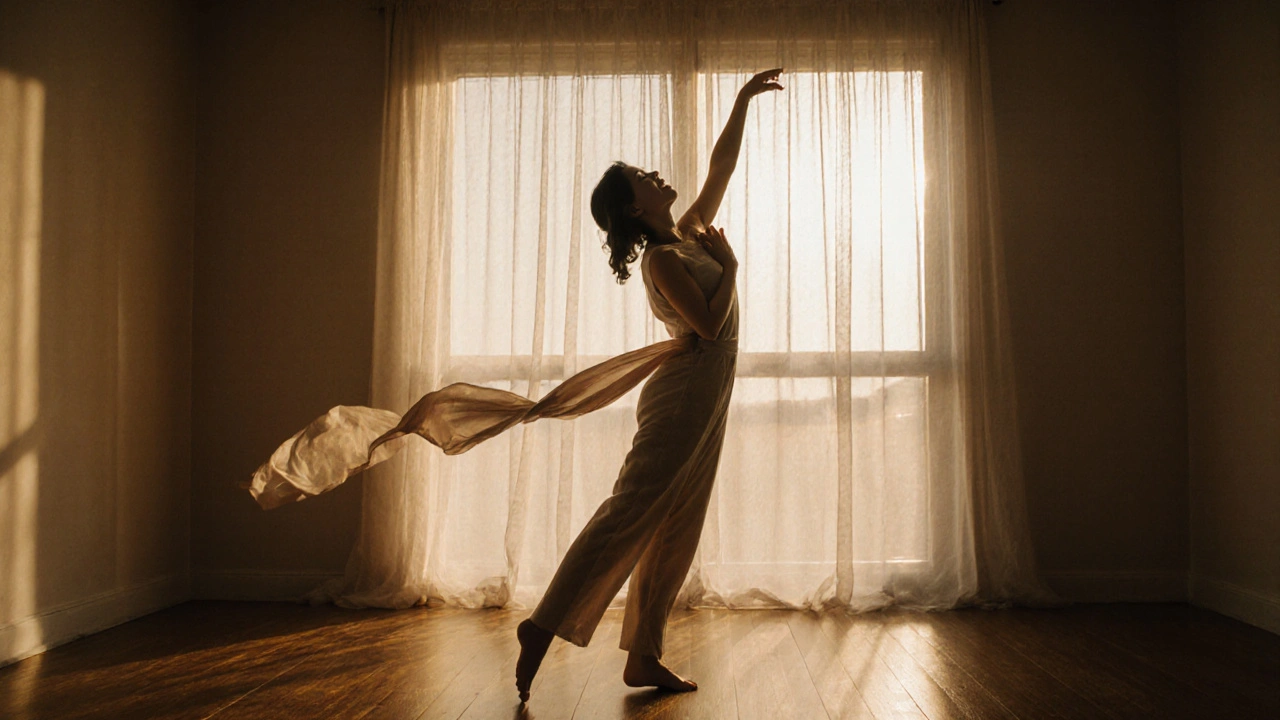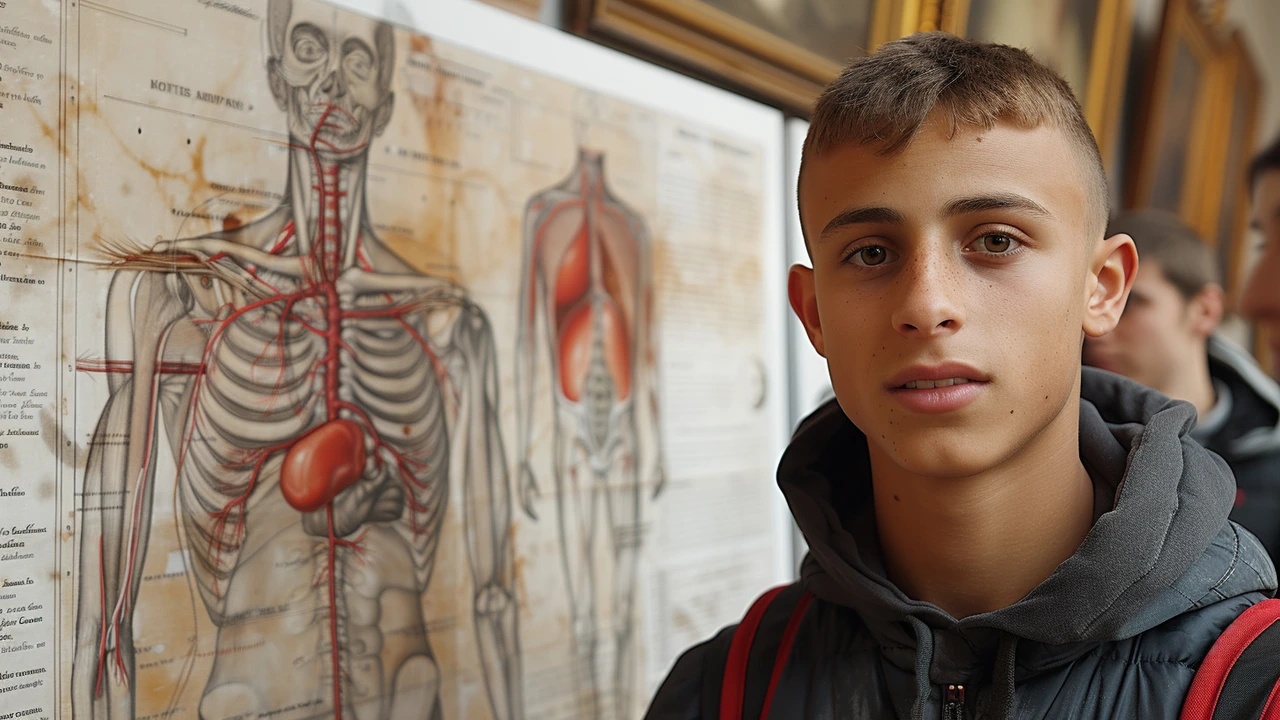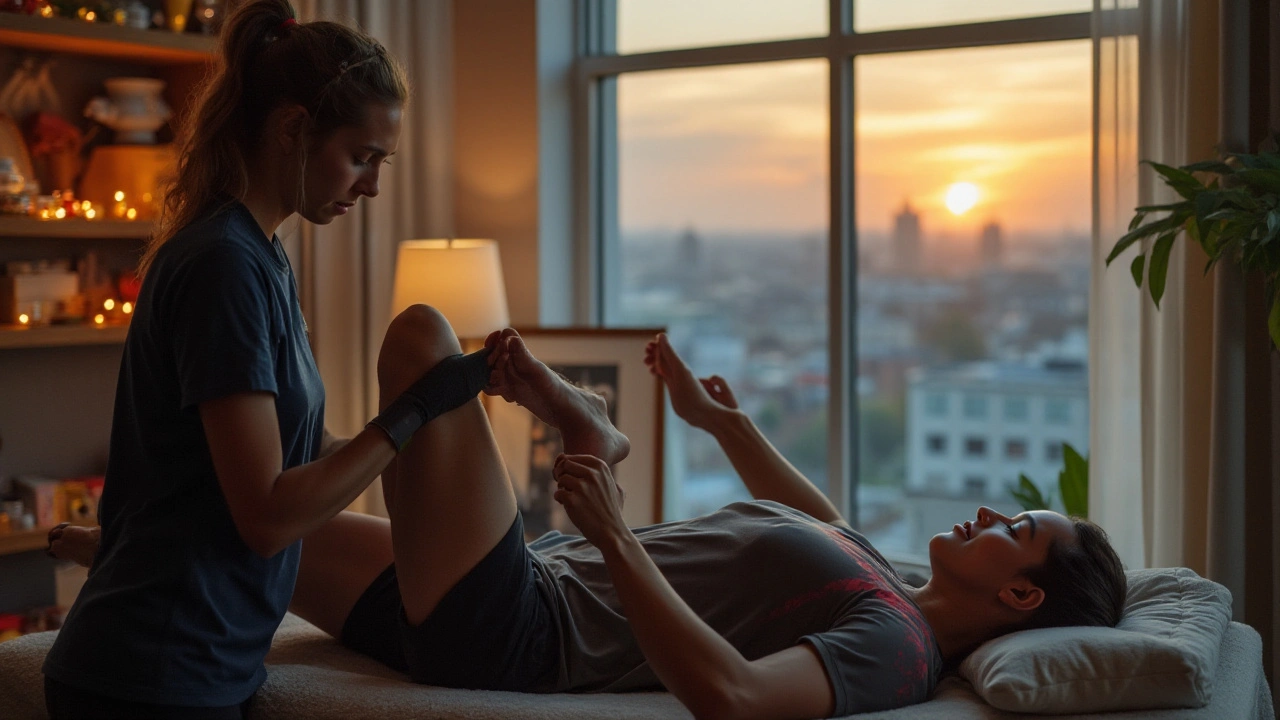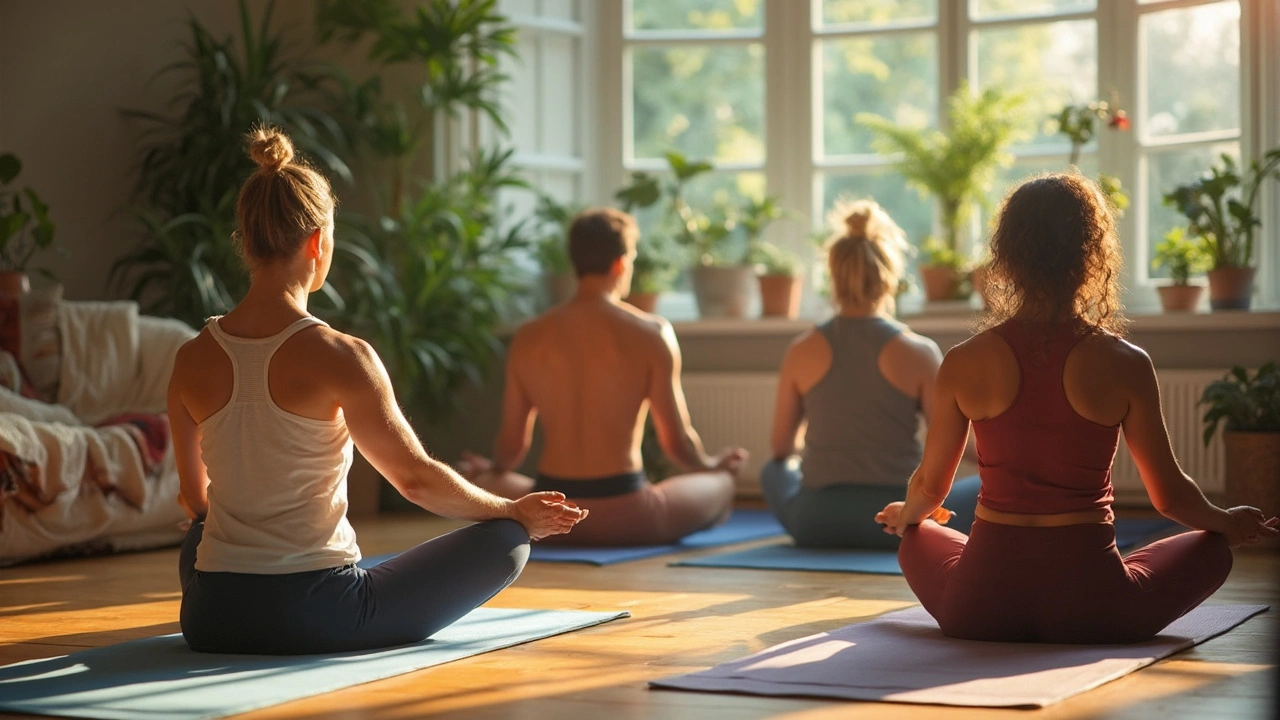Sensual Fitness: How Flirt Dance Massage is Rewriting the Rules of Body Connection

Sensory Awareness Quiz
Find out how connected you are with your body. This short quiz will help you understand if flirt dance massage might be a valuable practice for you.
How often do you feel disconnected from your body?
How do you typically feel during your daily activities?
How would you describe your relationship with physical touch?
How do you typically experience your breath during daily life?
How would you describe your body posture?
Your Body Connection Level
Based on your responses, here's what your results indicate about your relationship with your body.
Most people think fitness is about lifting weights, running miles, or crushing HIIT workouts. But what if your body isn’t asking for sweat-it’s asking for touch, rhythm, and play? That’s where flirt dance massage comes in. It’s not a spa treatment. It’s not a dance class. It’s not erotic massage in the way most people imagine. It’s something quieter, deeper, and far more transformative: a form of sensual fitness that’s quietly changing how people connect with their own bodies.
What Exactly Is Flirt Dance Massage?
Flirt dance massage blends slow, intentional movement with light, teasing touch. Think of it as a conversation between skin and motion. A trained practitioner uses feather-light strokes, gentle pressure along muscle lines, and rhythmic swaying to guide the recipient into a state of embodied awareness. The "flirt" part isn’t about seduction-it’s about invitation. The body is invited to relax, to respond, to feel.
Unlike traditional massage, which often aims for relaxation or pain relief, flirt dance massage focuses on sensory awakening. The goal isn’t to fix anything. It’s to notice. Where does your breath catch? Where do you tense without realizing? Where do you smile without knowing why?
It’s not new. Roots trace back to tantric practices, somatic therapy, and even early 20th-century movement schools like Labanotation. But in 2025, it’s gaining traction-not as a niche fetish, but as a tool for people who feel disconnected from their bodies after years of stress, screen time, or emotional suppression.
Why It’s Called "Sensual Fitness"
Fitness isn’t just about strength or endurance. It’s about responsiveness. About coordination. About knowing where your body ends and the world begins. Flirt dance massage builds that awareness through sensation, not repetition.
Participants often report feeling more grounded after a session. Not tired. Not relaxed. Present. One client in Toronto, a 42-year-old software engineer, said: "I used to feel like I lived in my head. After three sessions, I noticed I was standing differently-shoulders down, weight balanced. I didn’t even realize I’d been hunched over for a decade."
It’s fitness because it trains the nervous system. Just like yoga or tai chi, it rewires how the brain interprets touch, movement, and stillness. But instead of holding poses, you’re learning to ride the wave of sensation-letting it rise, flow, and fade without resisting.
How It’s Different From Erotic Massage
People confuse flirt dance massage with erotic massage because both involve touch. But the intent is worlds apart.
Erotic massage typically aims for sexual release. Flirt dance massage aims for sensory clarity. There’s no expectation of orgasm. No pressure to perform. No nudity required. Sessions are fully clothed or draped, with boundaries set upfront and respected without question.
The touch is designed to be pleasurable, yes-but not in a sexual way. It’s the pleasure of being seen, of feeling safe enough to let your body move without judgment. A brush across the shoulder blade might make you sigh. A slow circle on the lower back might make you remember how it felt to dance barefoot in your kitchen at 17. Those aren’t sexual triggers. They’re memories unlocked by touch.
Practitioners are trained in ethics, consent, and somatic boundaries. Many have backgrounds in physical therapy, dance therapy, or trauma-informed care. This isn’t a service you find on a random app. It’s offered through licensed wellness studios, often with referrals from therapists or yoga instructors.

What Happens in a Typical Session?
A session usually lasts 60 to 90 minutes. You start by talking-no pressure, just sharing what’s on your mind. Are you tense? Numb? Overstimulated? The practitioner listens, then designs the session around your energy, not a script.
Then comes the movement. You might be guided to stand barefoot on a soft mat while the practitioner mirrors your breath with gentle hand movements. Or you might lie face down as they trace the curve of your spine with fingertips, not to press deep, but to invite you to feel the rhythm of your own pulse beneath the skin.
At one point, you might be asked to sway side to side while they hold your wrists lightly-not to control you, but to help you notice how your hips naturally follow. There’s no choreography. No right or wrong way to move. The only rule: stay curious.
Some sessions end with you dancing alone for five minutes, eyes closed, while soft music plays. No one watches. No one judges. You’re just there, moving because your body wants to.
Who Benefits the Most?
This isn’t for everyone. But for certain people, it’s life-changing.
- People recovering from trauma or chronic stress-especially those who feel "shut down" emotionally
- Women after childbirth who feel disconnected from their bodies
- Men who were taught to suppress physical expression
- Couples who’ve lost physical intimacy but still crave connection
- Anyone who says "I just feel like I’m not in my body anymore"
It’s not therapy. But it often leads to breakthroughs that therapy alone can’t reach. One woman in Vancouver, after years of anxiety and dissociation, told me: "I finally felt my hands again. Not as tools. As part of me."
It works because it bypasses the mind. Trauma lives in the body. So does joy. Flirt dance massage doesn’t talk about feelings-it lets the body remember them.

What You Need to Know Before Trying It
If you’re curious, here’s how to approach it safely:
- Choose a certified practitioner. Look for credentials in somatic therapy, dance/movement therapy, or trauma-informed touch. Avoid anyone who doesn’t offer a consultation first.
- Ask about boundaries. A good practitioner will explain exactly what to expect-what’s touched, what’s not, how consent is checked during the session.
- Wear comfortable clothes. You’ll stay dressed. No need to undress unless you choose to, and even then, it’s optional.
- Don’t go expecting a "high" or orgasm. Go to feel. Go to notice. Go to be still.
- Afterward, give yourself space. Don’t jump into a meeting or scroll through your phone. Drink water. Walk slowly. Let your nervous system settle.
Costs range from $80 to $150 per session, depending on location and practitioner experience. Some wellness centers offer package deals. Insurance doesn’t cover it-but some flexible spending accounts might, if you have a referral from a licensed therapist.
The Bigger Shift: From Performance to Presence
We live in a world that values output. How many reps? How many steps? How many likes? Flirt dance massage flips that. It asks: How present are you? How aware? How alive in your skin?
It’s not about getting fit. It’s about remembering what it feels like to be human.
More studios are opening in cities like Toronto, Berlin, and Portland. Workshops are popping up at yoga festivals. Online courses are teaching self-guided versions-simple movements you can do alone, with a partner, or even just in front of a mirror.
This isn’t a trend. It’s a correction. We’ve been told to push, strain, and optimize our bodies. Now, some of us are learning to listen.
Is flirt dance massage sexual?
No. While it involves touch and can feel pleasurable, it’s not designed for sexual arousal or release. The focus is on sensory awareness, emotional safety, and body reconnection. Practitioners maintain strict ethical boundaries, and sessions are typically fully clothed.
Do I need to be flexible or fit to try this?
No. There’s no physical requirement. You don’t need to dance well, stretch deeply, or be in shape. The practice works with your body as it is-whether you’re stiff, tired, or numb. Movement is guided, not forced.
Can I do this with my partner?
Yes, many practitioners offer couple’s sessions. These focus on rebuilding non-sexual intimacy through synchronized movement and gentle touch. It’s often used by couples who’ve lost physical connection but still want to feel close again.
Is this the same as tantric massage?
There’s overlap, but they’re different. Tantric massage often includes energy work and can aim for extended arousal. Flirt dance massage avoids sexual goals entirely. It’s more about grounding, awareness, and rediscovering pleasure in simple sensation.
How many sessions does it take to feel a difference?
Some people feel a shift after one session-like a weight lifting off their shoulders. Others need three to five to notice lasting changes in posture, breathing, or emotional openness. It’s not a quick fix. It’s a slow return to yourself.
What Comes Next?
If you’ve ever felt like your body doesn’t belong to you anymore, flirt dance massage might be the quietest way back. Not through effort. Not through pain. But through tenderness.
Start small. Find a local practitioner who offers a 30-minute intro session. Sit with your thoughts afterward. Notice if you breathe deeper. If you move differently. If you feel more… real.
You don’t need to change your life. You just need to remember how it feels to be inside it.





